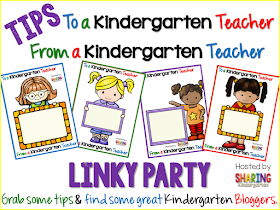Here are my top 4 tips:
If you're on Pinterest, no doubt you'll see all sorts of cool classroom management ideas over the summer. It's wonderful because you'll have so many strategies in your toolbox! The downside though, is a lot of the strategies won't work if your kids aren't developmentally ready! Have you seen the one about not blurting out in class? Well guess what? If your students have not developed an "inner voice" it doesn't matter what incentives or punishments you use, the student won't be successful because they haven't developed the ability to keep their thoughts inside their head. And, an inner voice typically appears by the developmental age of 8. So in a kindergarten class, some will have it, but many others won't! So make sure you know what's appropriate to expect of your students - you will be less frustrated when you're not trying to get orange juice from an apple! Check out this developmental milestone guide for what a typical 5 to 6 year old can do!
I cannot say enough about play-based learning. I know that some administrations make it difficult to include play in the day. That doesn't mean you should give up and turn to worksheets. It means that you MUST KNOW the benefits of play and you must be able to ARTICULATE what your students are learning at each center! When someone comes in and say "Why are they playing with blocks?" you need to be able to say "They're developing spatial concepts that are important for math. They're improving their fine motor skills and experimenting with balance and gravity. They're problem-solving and engaging in cooperative play - learning to work as a team!" My Center Signs have these "I am" statements listed on them, so visitors can read them and so I can remember my talking points if anyone ever questions me! Talk to your administration about brain research and myelination and how students have to have ample opportunities to practice what they learn. If all else fails, close your door and do what's best for your students. It is often very possible to meet the minimum required by your administration and use the rest of your time in more developmentally appropriate ways.
Make your classroom reflect you. Decide on your rules and procedures - what are the most important things and which do you not really care about? Don't get caught up in someone else's rules just because you saw a cute alliterative poster somewhere. A 4s line might be great for someone else, but you may need to focus on facing forward and not leaving a gap. What's your stance on tattling? How many reminders will you give? You have to have hard and soft limits and you need to make sure you communicate those to your students. One of my hard rules is "We write on paper or dry erase boards, not on tables or chairs." I always keep Mr. Clean erasers on hand so that if someone does color on their table, I can give them an eraser to clean it up right away. That's a logical consequence - you colored it, you erase it.
Decide which aspects of your day are most important, and which can be skipped if there's an assembly or field trip. Generally, if we have an assembly, I take that time out of our reading block rather than out of our center time because I value our center time more. If you go to the Library, will that time count at your read aloud for the day or will you take something else out instead?
Since I don't have a ton of money, I spend it on what's important to me - books, dry erase markers and paint - before I spend it on anything else. If you don't have dry erase boards (I can't live without them!) then the markers might not be a big deal to you. You may decide to use watercolors because the kids bring them in, rather than tempera paint that you have to purchase. Is it more important that your kids are reading books on their level or books that they're interested in - whatever you decide will determine how you arrange your library! Are you going with glue sticks, glue sponges or tap & glue caps? Lots of decisions with no right or wrong answer, simply your preference! Decide what's important and worth your time/money, and what's not!
Those are my tips ~ I hope you got a little something to think about for the 2015-2016 school year! Now go check out what other kindergarten bloggers have to say!






Thanks for such great tips! I love the idea of "I am" statements- we use the "I can" statements all the time, but I like that they provide reasoning on WHY play is important. Thanks for the excellent ideas!
ReplyDeleteDeirdre
Mrs. Garcia's Super Scholars
As a first grade teacher that is moving down to kinder next fall this was very helpful! Thanks for the link to your Center "I am" posters!
ReplyDelete